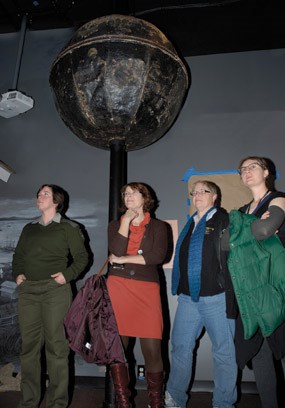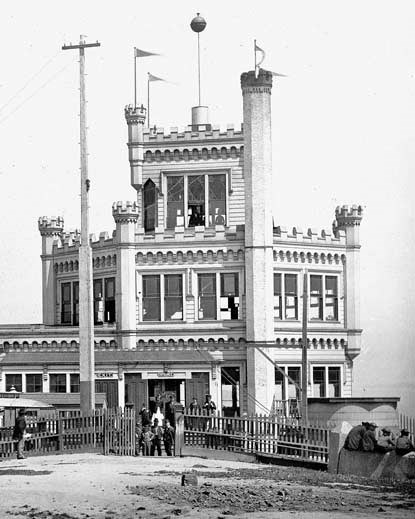
NPS As early as 1833, the Greenwich Observatory in England began dropping the noon time ball as a visual time signal for ships in the harbor. Major ports in the United States followed England's lead and by 1852, San Francisco's first time ball was dropping from the top of the signal-pole located on Telegraph Hill, a spot visible to vessels anchored throughout the San Francisco Bay. In 1898 the time ball moved to the top of the Ferry Building where it remained until 1907. Late in April 1909, newspapers reported a "newer, more glinty and faster falling ball will announce the noon hour from the highest point [415 feet above sea level] on the Fairmont Hotel [where] it is … visible over a greater range than the one on the ferry tower and will be of more value … to the shipping in the port." On June 30, 1937, the time ball dropped for the last time as technology rendered it obsolete. Late in 1953 when the roof of the Fairmont was refurbished, the time ball was rediscovered and six months later it was donated to the Maritime Museum. Today, nearly 50 years after its last drop, the time ball once again has been hoisted aloft poised to mark the noon hour atop Telegraph Hill in the park's new "The Waterfront" exhibit in the Visitor Center. 
NPS, SAFR A11.272n |
Last updated: March 1, 2015
